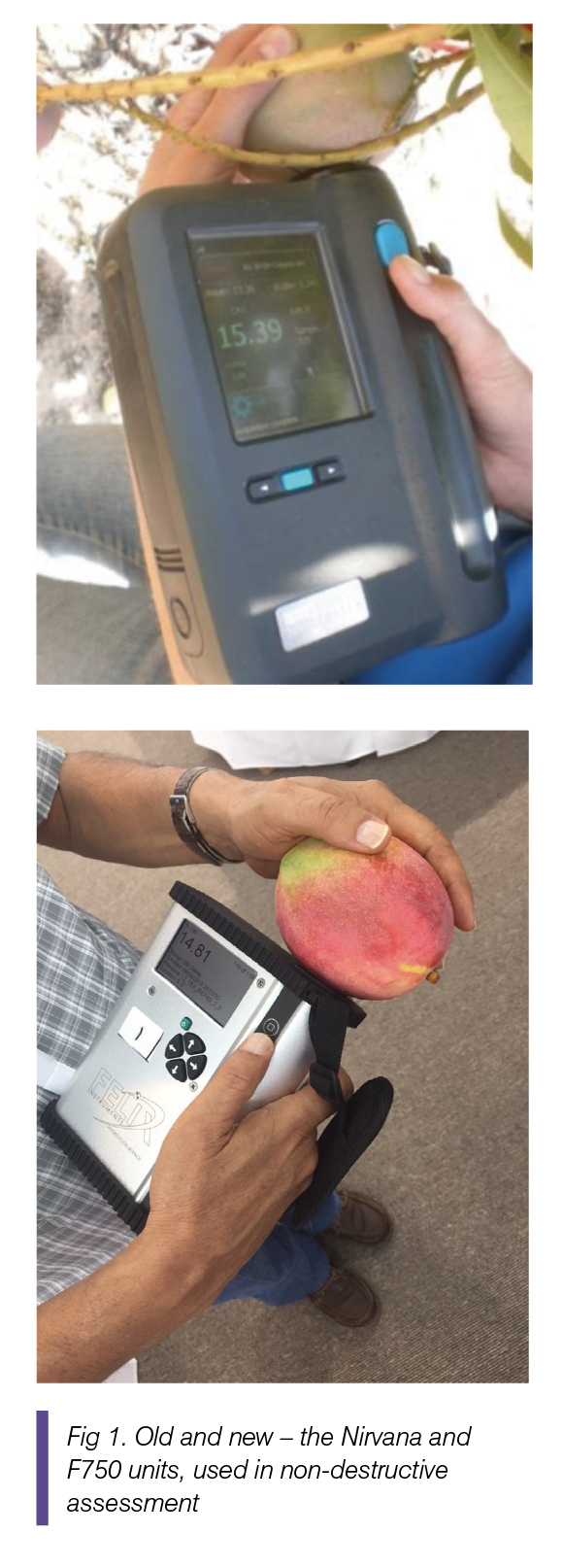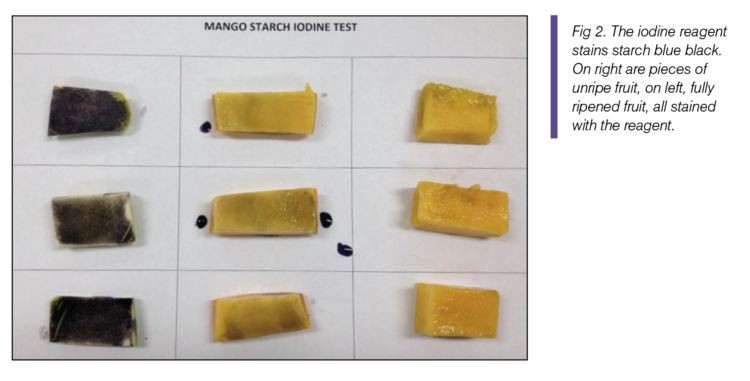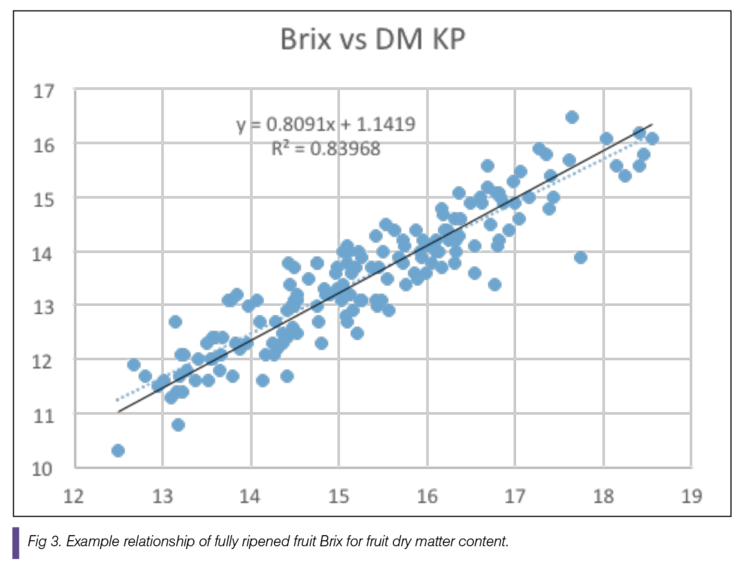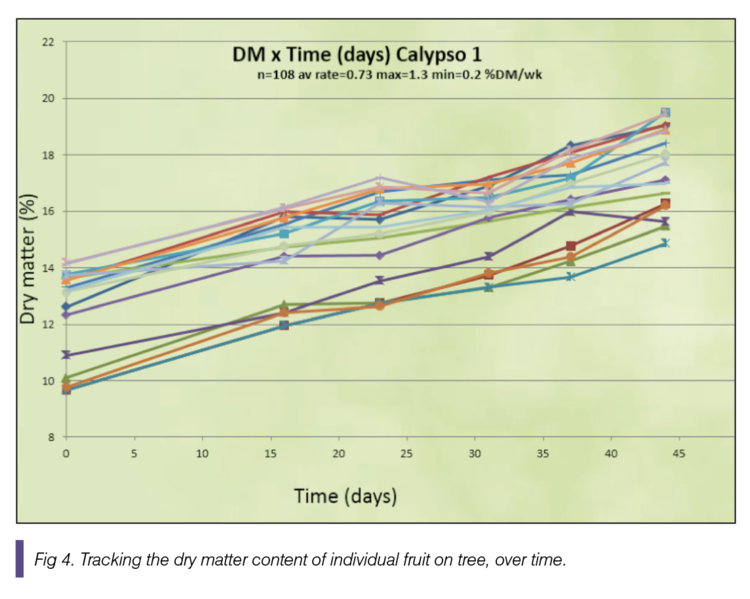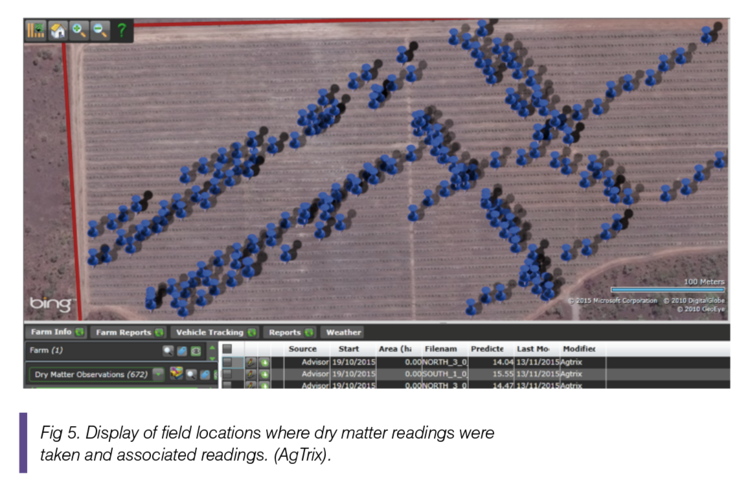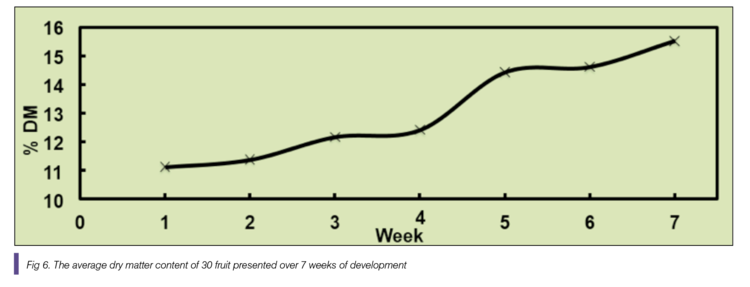Dry matter matters
Our group has been collaborating for some time on the development of handheld instrumentation for the measurement of Brix or dry matter in fruit. Our original partner, Australian company Integrated Spectronics, ceased trading and the baton has been taken up by Felix Instruments of USA. The F750 was released just in time for the start of the Australian mango season, and the unit has undergone improvements since (Fig. 1).
To refresh your memories on why dry matter matters...
Mango fruit store starch and some sugar as they mature. The dry matter content of a fruit is the sum of starch and sugar and other (relatively constant) cell components such as cell walls and fibres. Thus dry matter content is a useful estimate of starch and sugar content. As fruit ripen, all starch converts to sugar (Fig. 2), and so dry matter at harvest is a useful index of sugars (Brix) of fully ripened fruit. Brix is important in relation to taste (if other ripening processes such as firmness are under control).
So, be they KP, Honey Gold, Calypso, Keitt or other, the Brix of fully ripened fruit is indexed by the dry matter of fruit at harvest.
But fruit vary in dry matter, between orchards, between trees, and within a tree, courtesy of stage of development (flowering time) and photosynthetic conditions. So you need to measure a number of fruit to have a valid estimate of the mean and spread of fruit in the orchard. This is where the handheld NIR (near infra-red) unit comes into play, because it can take a measurement in field, without destroying the fruit. In the following example, individual fruit have been repeatedly measured on tree for dry matter over time. The average rate of increase was 0.72% DM/week.
Now AMIA has made recommendations on dry matter content at harvest. You can see that by day 43, some but not all fruit have dry matter over 15% (Fig. 4)
We are currently working with AgTrix to provide tools to make this data more useful to a farm manager, associating readings to user defined blocks and displaying average and spread of dry matter and rate of change between weeks to help in the management decision, determining time to harvest (Fig. 5)
What causes variation in dry matter content?
Well dry matter is starch and sugar content of the fruit—so photosynthetic conditions and plant water status are important. Factors such as light levels, temperature, soil moisture, fruit load, fruit position in canopy will affect the outcome. We are looking at the impact of field management on dry matter increment, e.g. a rain event or denial of water. For example, in Fig. 6 the average dry matter content of 30 fruit is presented over 7 weeks of development. What happened in week 4-5 to cause the large increase?
We are also currently looking at the calibration of the F750 units across regions and varieties. Another HIA supported project, will use the units to estimate dry matter content of ripening fruit which would enable assessment of a dry matter specification at any stage of the supply chain.
This work was supported by Hort Innovation project ‘Multi-scale monitoring tools for managing tree crops’ ST15005 and ‘Quality standards, refinements and testing’ MG15002.
Article prepared by Kerry Walsh from Central Queensland University. For more information please contact Kerry Walsh on 0418 981 361.
